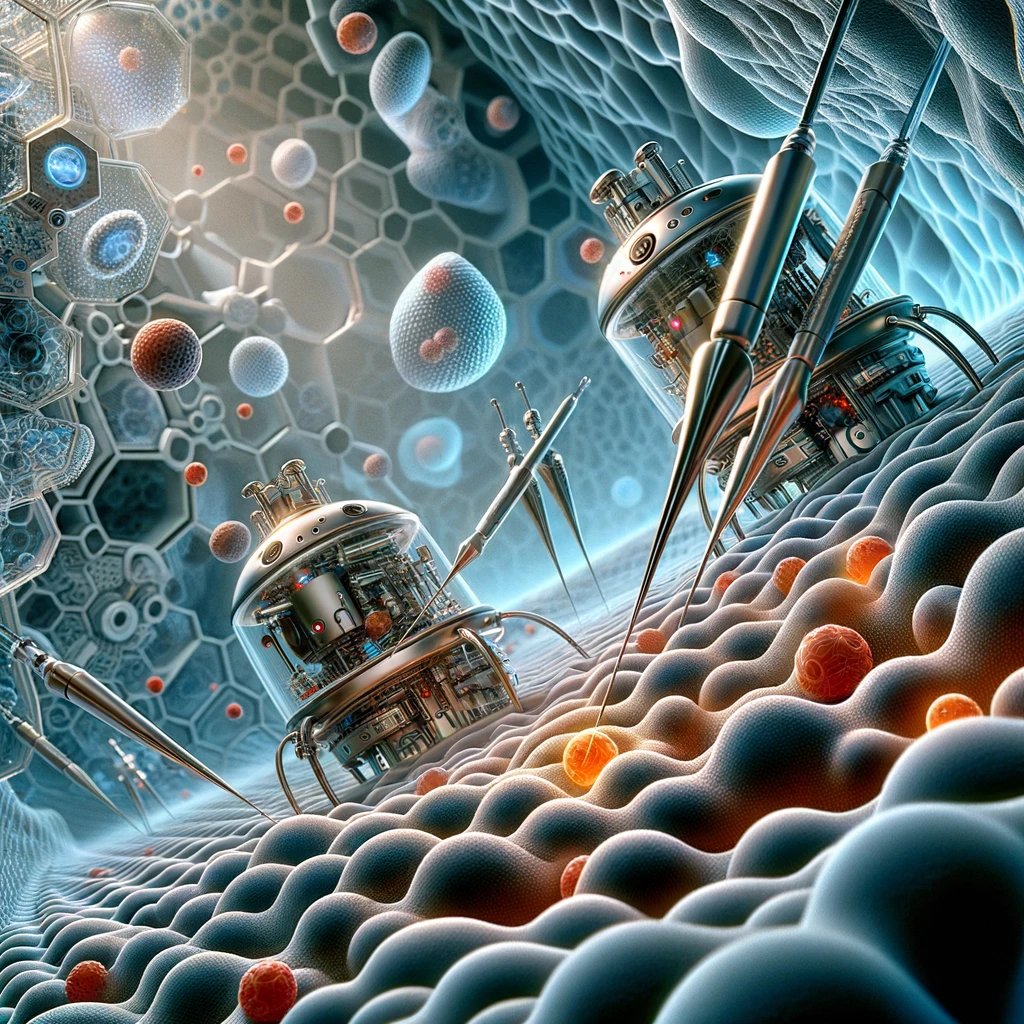Nanotechnology represents a field of science and technology focused on the manipulation of matter at the nanoscale, or dimensions ranging from 1 to 100 nanometers (a nanometer is one billionth of a meter).
This field spans a wide range of disciplines, including chemistry, physics, biology, materials engineering, and electronics. Let’s explore this topic further!
History
Evolution of nanotechnology can be traced through several key stages:
Theoretical roots (late 1950s – 1980s)
- 1959: Richard Feynman, physicist and Nobel laureate, delivers his famous lecture “There’s Plenty of Room at the Bottom”,which many consider the conceptual cornerstone of nanotechnology, although he never used the term “nanotechnology”.Feynman spoke of the possibility of manipulating matter atom by atom.
- 1981: The invention of the tunnel effect microscope (STM) by Gerd Binnig and Heinrich Rohrer at IBM Zurich Research Laboratories made it possible for the first time to visualize individual atoms, later winning the Nobel Prize in Physics in 1986. This instrument was instrumental in the development of nanotechnology.
The Concept of Nanotechnology (1980s)
1986: K. Eric Drexler published “Engines of Creation: The Coming Era of Nanotechnology”, which popularized the term “nanotechnology” and introduced the concept of molecular assemblers, machines capable of building complex structures atom by atom. This vision stimulated public and academic interest in nanotechnology.
Development and application (1990s – 2000s)
During the 1990s and early 2000s, there were significant advances in the synthesis and manipulation of nanomaterials, such as carbon nanotubes, quantum dots, and gold nanoparticles, which found applications in fields ranging from electronics to medicine.
Nanotechnology has begun to be incorporated into commercial products, such as stronger fabrics, cosmetics, brighter screens and more effective drugs.
Nanomedicine and beyond (2000-present)
- Nanomedicine has become one of the most promising areas of nanotechnology, with the development of targeted drug delivery systems, nanoparticle-based therapies, and advanced diagnostic techniques.
- Nanotechnology has also found revolutionary applications in areas such as energy, with the development of more efficient solar cells, batteries with greater capacity and durability, and materials for carbon capture and storage.

From Fantasy to Reality
Nanotechnology, a field of science and engineering focused on the manipulation of matter at the nanoscale (a nanometer is one billionth of a meter), has made great strides in recent decades. This field deals with the creation and use of structures, devices and systems by manipulating atoms and molecules at the nanoscale. While some applications of nanotechnology seem straight out of a science fiction novel, many of them are already reality or in an advanced state of development. Here’s an overview of what’s true with respect to representations in science fiction:
Health and Medicine
Science Fiction: Nanometric robots that can travel inside the human body to repair cellular damage or fight disease.
Reality: Although nanorobots as described in science fiction are not yet a reality, nanotechnology is being used to improve drug delivery, enabling greater specificity and reducing side effects. Nanoscale drug delivery systems are being developed to treat cancer, cardiovascular disease and other conditions.
Electronics
Fantasy: Ultra-small and powerful electronic devices, often with self-assembly or self-repair capabilities.
Reality: Nanotechnology has enabled remarkable advances in the miniaturization and efficiency of electronic devices. Denser memories, more sensitive sensors, and batteries with greater capacity and durability are all products that benefit from research in this field.
Materials
Fantasy: Materials with super strength, self-repair, or the ability to change shape or color on command.
Reality: Nanocomposite materials with improved properties, such as increased strength, light weight, and thermal or electrical conductivity, have been developed. Materials that change color or have self-repairing properties are being researched and developed.
Energy
Fantasy: Almost total energy efficiency, with devices capable of capturing and using almost any form of energy.
Reality: Nanotechnology is being used to improve the efficiency of solar panels and develop more efficient and long-lasting batteries. Nanomaterials that improve energy conversion and storage capacity are being developed.
Environment
Fantasy: Nanomachines that can clean up pollution or convert waste into useful materials.
Reality: Nanotechnology is being used to develop more effective methods of treating water and air, as well as to create materials that can capture and neutralize pollutants.
While some applications of nanotechnology found in science fiction remain speculative, many others are already a reality or are approaching becoming one. Research continues to push the boundaries of what is possible, promising further innovations and applications in the future.
About Future and Final Considerations
Further down, research in nanotechnology is moving forward and is making an exploration of new nanocomposite materials, interfaces between biology and nanomaterials to develop biohybrid systems, and the use of nanotechnology for solving world problems like ensuring food safety, accessibility of clean water, and keeping climate change in check.
The convergence of nanotechnology with other emerging technologies, such as artificial intelligence and robotics, promises to open new frontiers in materials science, electronics, and future medicine.
In this regard, then, nanotechnology can be looked upon as the bridge between science and science fiction, making the things that were once thought to be ideas found in science fiction—with no grounding in reality but now—presenting themselves as tangible applications of the science. From medicine to electronics, materials to energy, and the environment, to a gamut of fields—nanotechnology innovations are changing the game and making it possible to develop new solutions to problems that have been unsolved for a long time and new possibilities that have been inconceivable.
And, while at this stage some ideas are beyond our technology, the development of nanotechnology surely will cross the borders of possible and prove that whatever someone imagines to be today will be science. Against this dynamic, the future of nanotechnology simply has to look good—not merely promising, but even exciting, with untapped potentials waiting to be discovered.






